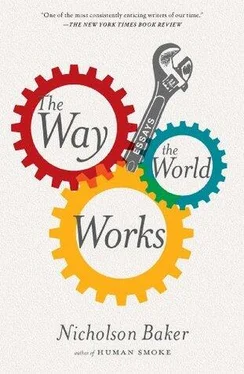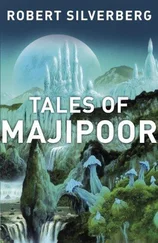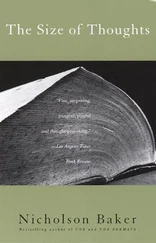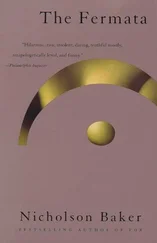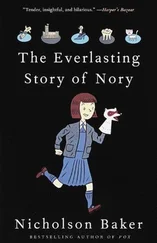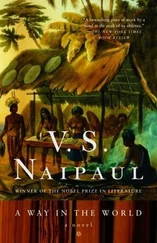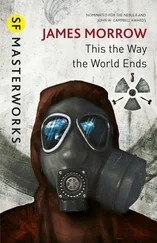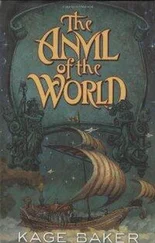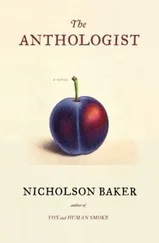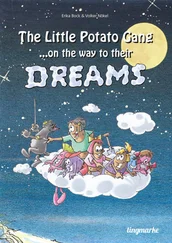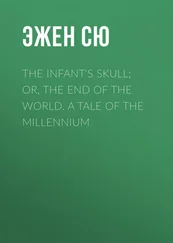Nicholson Baker - The Way the World Works
Здесь есть возможность читать онлайн «Nicholson Baker - The Way the World Works» весь текст электронной книги совершенно бесплатно (целиком полную версию без сокращений). В некоторых случаях можно слушать аудио, скачать через торрент в формате fb2 и присутствует краткое содержание. Год выпуска: 2012, Издательство: Simon & Schuster, Жанр: Публицистика, Критика, на английском языке. Описание произведения, (предисловие) а так же отзывы посетителей доступны на портале библиотеки ЛибКат.
- Название:The Way the World Works
- Автор:
- Издательство:Simon & Schuster
- Жанр:
- Год:2012
- ISBN:нет данных
- Рейтинг книги:4 / 5. Голосов: 1
-
Избранное:Добавить в избранное
- Отзывы:
-
Ваша оценка:
- 80
- 1
- 2
- 3
- 4
- 5
The Way the World Works: краткое содержание, описание и аннотация
Предлагаем к чтению аннотацию, описание, краткое содержание или предисловие (зависит от того, что написал сам автор книги «The Way the World Works»). Если вы не нашли необходимую информацию о книге — напишите в комментариях, мы постараемся отыскать её.
), here assembles his best short pieces from the last fifteen years.
The Way the World Works
OED
Modern Warfare 2
Through all these pieces, many written for
, and
, Baker shines the light of an inexpugnable curiosity.
is a keen-minded, generous-spirited compendium by a modern American master.
The Way the World Works — читать онлайн бесплатно полную книгу (весь текст) целиком
Ниже представлен текст книги, разбитый по страницам. Система сохранения места последней прочитанной страницы, позволяет с удобством читать онлайн бесплатно книгу «The Way the World Works», без необходимости каждый раз заново искать на чём Вы остановились. Поставьте закладку, и сможете в любой момент перейти на страницу, на которой закончили чтение.
Интервал:
Закладка:
The second thing I learned about video games is that they are long. So, so long. Playing one game is not like watching one ninety-minute movie; it’s like watching one whole season of a TV show — and watching it in a state of staring, jaw-clenched concentration. If you’re good, it might take you fifteen hours to play through a typical game. If you’re not good, like me, and you do a fair amount of bumping into walls and jumping in place when you’re under attack, it will take more than twice that.
On the other hand, the games can be beautiful. The “maps” or “levels”—that is, the three-dimensional physical spaces in which your character moves and acts — are sometimes wonders of explorable specificity. You’ll see an edge-shined, light-bloomed, magic-hour gilded glow on a row of half-wrecked buildings and you’ll want to stop for a few minutes just to take it in. But be careful — that’s when you can get shot by a sniper. Stay frosty.
The first game I bought was Halo 3: ODST, developed by Bungie and published by Microsoft Game Studios last September. It’s not one of the really beautiful games, but it’s instructive. Halo was Microsoft’s first hit on the Xbox, in 2001, and this is the latest offering in the long-running series. It’s set in 2552, during a space war. ODST stands for Orbital Drop Shock Troopers — people who say things like “You know the music, time to dance,” and then drop down through the atmosphere into battle. I plummeted into the city of New Mombasa, Africa, which looked like a dim, cast-concrete parking garage but with grand staircases. An alliance of bad creatures called the Covenant had killed billions of people, and this drop might be an opportunity to save humankind.
Mostly I glided up and down ramps and stairs, shooting at enemies, listening to chilly electronica. I played the game in “easy” mode, as opposed to “normal,” “heroic,” or “legendary”—the menu option reads “Laugh as helpless victims flee in terror from their inevitable slaughter”—but it didn’t seem all that easy to me. Short-statured, stocky aliens called Grunts popped up frequently, and with hostile intent — they had munchkin voices and cackled nastily and they said things like “Die, heretic!” I had to kill many of these. Other alien enemies, called Brutes, said, “I will split your bones.” They sounded as if they had ripped up their vocal cords by popping steroids. I used several different weapons to kill them, including the needler, which shot explosive needles, and I plundered dead alien bodies for more guns and ammunition. The Grunts and the Brutes jeered and tried to end my life. I got lost and hit cul-de-sacs and said bad words and hopped up and down near a burning car. Sometimes I died.
Whenever you’re injured, the screen begins to go red and you hear yourself gasping. Red arrows point in the direction of your attackers. As you near your end, your gasps come quicker and they become odd little yips and yelps of pain. Finally, you die, and the camera lifts. For the first time in New Mombasa — this being a first-person shooter — you see yourself from the outside: a rookie in a helmet falling to the pavement. Another life consumed in this endless war. But immediately you “respawn”—that is, you reappear, ready to try again, at a point a little earlier in the game.
The good thing about Halo 3: ODST is. . I don’t know. If I was fonder of 1970s cast-concrete architecture, I’m sure I would have enjoyed the experience more. The game seemed to me to be both desolate and repetitive, with incomprehensible biblical and race-war undermeanings. I flipped through the game guide, published by an imprint of Random House, and read a list of some of the medals you can earn. Killtacular is what you get if you kill five enemies in quick succession in fire-fight mode; Killtrocity if you add a sixth; Killimanjaro if you reach seven. “Dash about with the Gravity Hammer,” I read, “killing large groups of enemies for lengthy kill chains and hammer sprees before swapping to the Magnum and running to the next group of foes, plugging Grunts and Jackals in the head to keep the kill chain going.” Forget it.
Uncharted 2: Among Thieves, a production of the Naughty Dog studio, in Santa Monica, was the next game I tried, and it’s good. It was a Sony exclusive, meaning that I needed a PlayStation 3 to play it, and I didn’t have a PlayStation 3. Just coincidentally, in October my son’s Xbox developed the famous red ring of death, a total hardware failure signaled by a warning light around the On/Off button. This seemed a sign from the gods of war to get a PS3, which I did.
Uncharted 2 is about a blue-jeans-wearing male model, Nate, who wakes up with fresh blood on his hands and climbs around on a cold train wreck that is hanging off a cliff. It’s literally a cliff-hanger, you see. Nate (whom we can see, because this is a third-person game) is remarkably good at climbing on things, and his hands never stick to frozen metal, because he’s an action hero. He grunts realistically when he hurls himself up and over the edge of something — the voice actor who plays Nate, Nolan North, is an inspired grunter, and there must be a hundred different expressions of strain on this soundtrack.
Then the screen goes white, and we’re in a flashback. We learn that Nate, who can sight-translate medieval-Latin prose, is in search of Marco Polo’s lost treasure and that he must break into a museum in Istanbul, dart-gunning or punching or choking its numerous flashlight-wielding security guards. His goal is to find an ancient, precious green lamp that holds a clue. He finds it and, being an American action hero, immediately breaks it like a piggy bank on the floor. The clue within leads him to the jungles of Borneo, where he shoots some Russian-accented mercenaries — people are always shooting Russians in video games — and then it’s time to hurry off to sunny Nepal, where there are prayer flags, more mercenaries, and incredible vistas. The acting is often good and includes some funny ad-libs — not just by Nolan North but also by Richard McGonagle, who plays a crusty cigar-puffer. Two women appear in the game — one a tanned Aussie with black unruly bangs and sparkly eyes, who wears a red crop-top shirt that we see a lot of, and the other an old flame of Nate’s, an American journalist with Jennifer Aniston hair pulled back — both of them joshing and likable.
It’s a visual glory hallelujah of a game. Zebra shadows on leaves and rocks never looked better, nor did sunlit onion domes, nor bombed-out laundromats with puddles in them — and the shirts of the guards glimmering in the plum-purple half-light of the Istanbul Palace Museum are a sight to behold. I wish so many foreigners didn’t have to be shot, so many historical sites damaged without comment, but evidently they do or the game wouldn’t exist, and it’s diverting to clamber around on stone Buddhas, solving (or repeatedly failing to solve) spatial puzzles. When you die, the image desaturates to black-and-white and there’s a tactful moment of funereal bagpipery.
The best time I had with Uncharted 2 (which went on to win several game-of-the-year awards) was while eating a submarine sandwich and watching the making-of videos that came with the game disk, fantasizing about what it would be like to work for Naughty Dog as a late-afternoon-lighting designer or a stony-ledge-placement specialist. These people know how to have fun. They’ve even included an optional zero-gravity mode, in which mercenaries, when shot, flip up rag-dollingly in the air and drift there. After one battle, there were two riot shields and six bulletproof-vested dead people peacefully hanging like barrage balloons in the air in front of a temple.
After Uncharted 2 came the biggest release of the year— Call of Duty: Modern Warfare 2, developed by Infinity Ward and published by Activision on November 10. My son and his friends went to a local GameStop at midnight to get their reserved copies; they played it all night and then fell asleep in school assembly. Modern Warfare 2 sold fast — it reportedly made more money in its first twenty-four hours than Titanic or Avatar did. Millions of people play it every day. In less than a year, it has become the second-best-selling video game of all time, after Wii Play .
Читать дальшеИнтервал:
Закладка:
Похожие книги на «The Way the World Works»
Представляем Вашему вниманию похожие книги на «The Way the World Works» списком для выбора. Мы отобрали схожую по названию и смыслу литературу в надежде предоставить читателям больше вариантов отыскать новые, интересные, ещё непрочитанные произведения.
Обсуждение, отзывы о книге «The Way the World Works» и просто собственные мнения читателей. Оставьте ваши комментарии, напишите, что Вы думаете о произведении, его смысле или главных героях. Укажите что конкретно понравилось, а что нет, и почему Вы так считаете.
